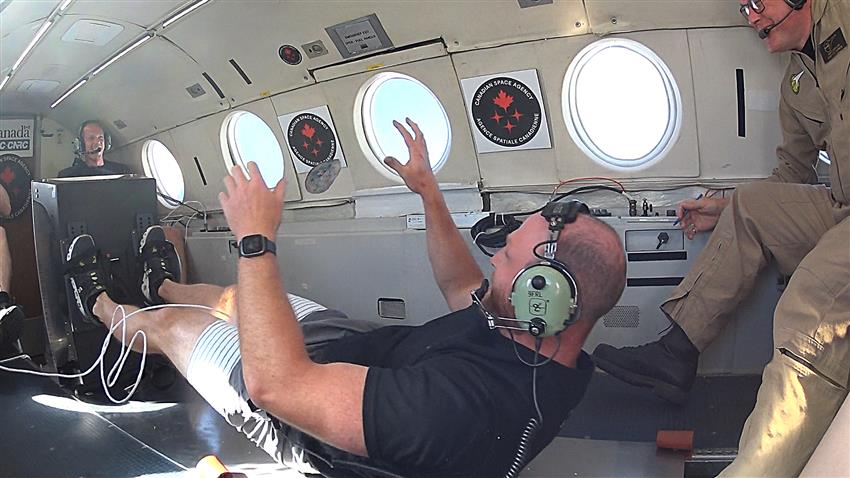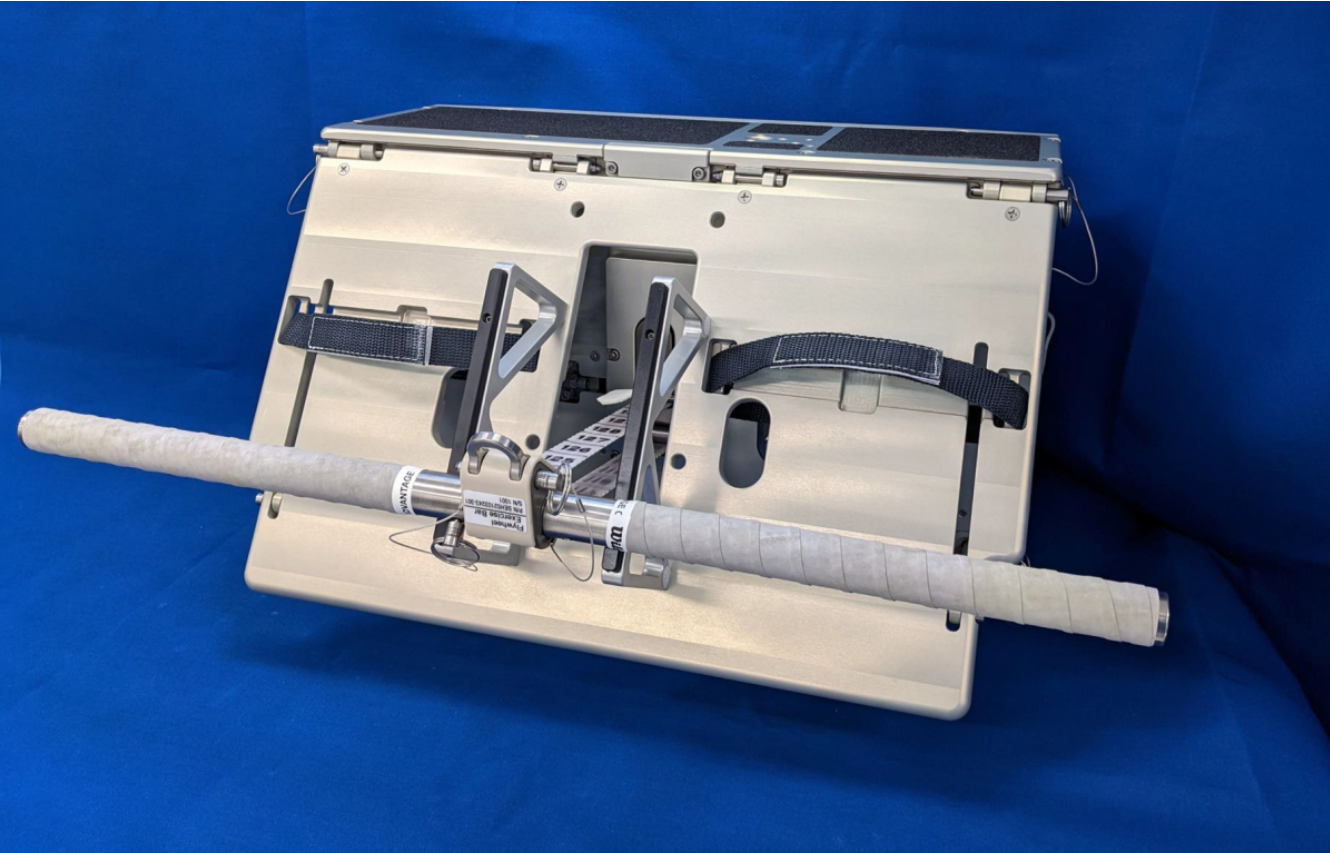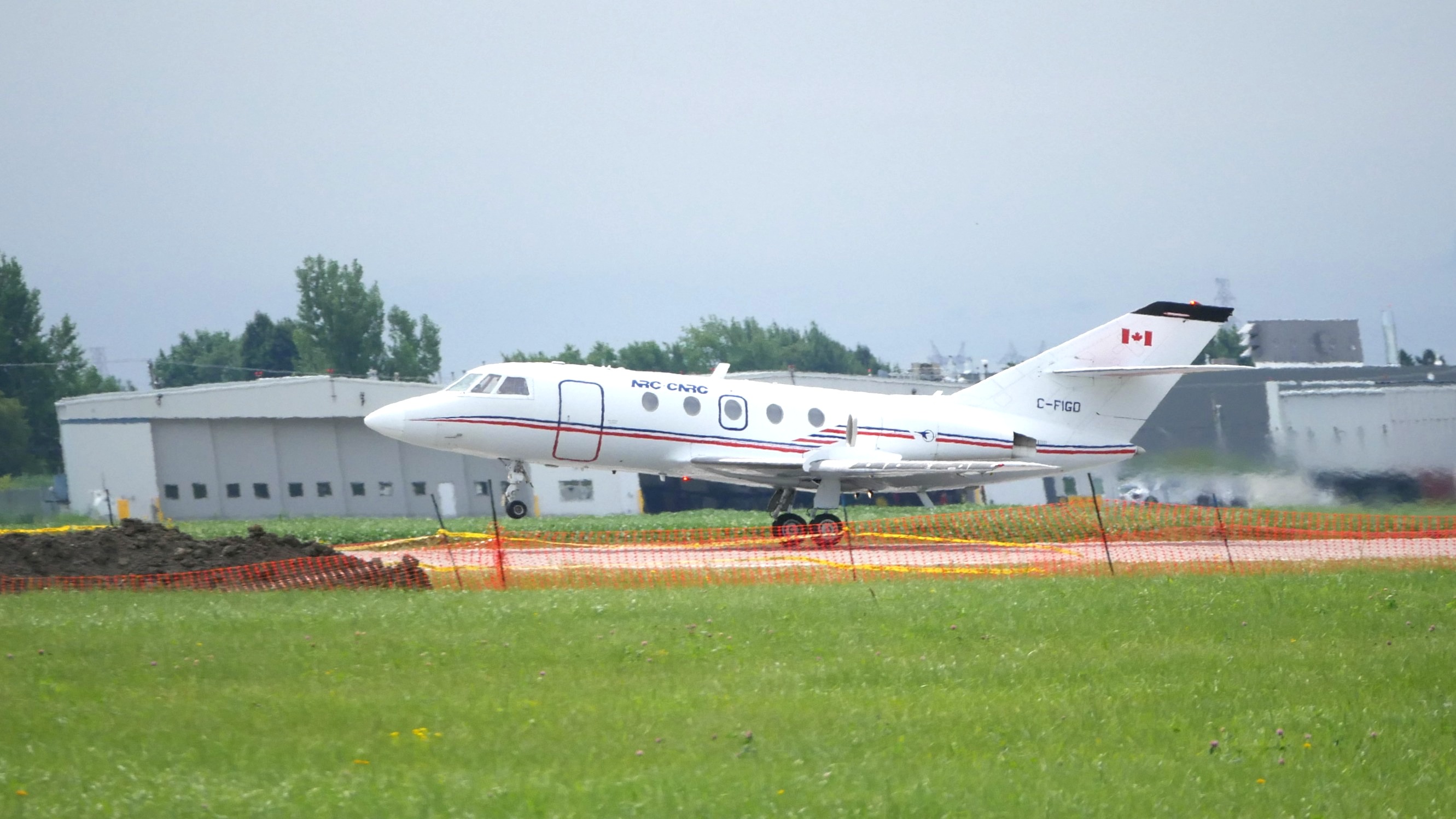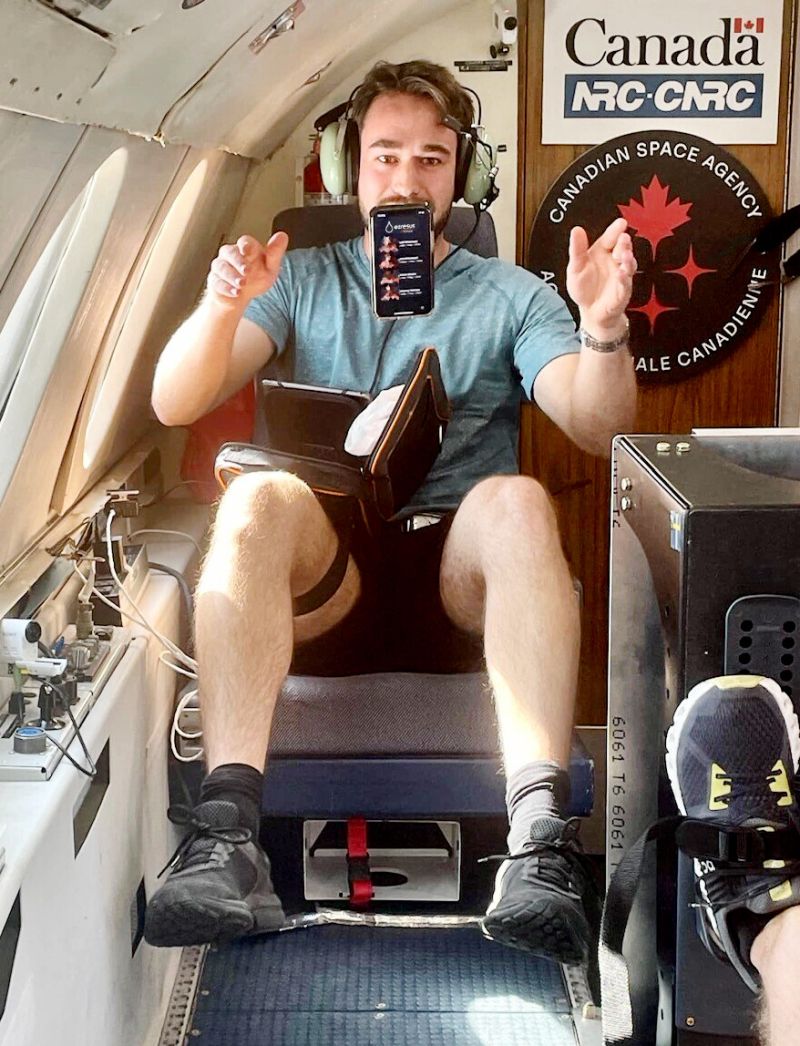Artemis 2 exercise device soars in parabolic flight (photos, video)
"We wanted to trial the exercises that we've got planned for Artemis 2."

An exercise device for the moon just had its first taste of microgravity.
A flywheel design destined to fly on the Artemis 2 round-the-moon astronaut mission, no earlier than 2025, flew six parabolic flights in Canada during the week of July 15. Researchers flew in a business jet known as the Falcon 20, taking off from Montreal before doing dives and climbs across the sky.
"We have been trying to understand both how to coach exercise technique on the flywheel, and then also how to prescribe the exercises that are going to be performed by the crew on Artemis 2," Natalie Hirsch, the Canadian Space Agency's (CSA) project manager of operational space medicine, told Space.com.
Flywheels are popular for living in small spaces on Earth as they combine cardio exercise with weightlifting activities like squats or deadlifts. But none has ever flown in space before, which is where NASA, CSA and other Canadian government departments hope to fill the gap.
Related: I flew weightlessly on a parabolic flight to see incredible student science soar
CSA astronaut Jeremy Hansen will be a mission specialist aboard the Artemis 2 mission and the first non-American to fly beyond low Earth orbit. (His crewmates are all from NASA: Reid Wiseman, Christina Koch and Victor Glover. Koch and Glover will become the first woman and Black person to fly to the moon, respectively.)
NASA developed the flywheel for the Orion spacecraft, with plans to use the device at least through Artemis 5. CSA agreed to make a commercial replica — identical in dimensions, gears and resistance levels — to test out exercises with it. Before floating, however, the CSA partnered with a Canadian Armed Forces division to recruit 30 military and CSA participants for ground testing.
Get the Space.com Newsletter
Breaking space news, the latest updates on rocket launches, skywatching events and more!
The participants each did 10 sessions with the commercial flywheel, including two familiarization sessions. Data was gathered on items such as their body composition, the resistance, the cadence and the power and force required, to assess feasibility of use.
As those results are being evaluated, a small team took to the skies to use the flywheel for 20 seconds at a time. The parabolic campaign aimed to answer questions such as which exercise program would be the most effective, if a tiny space was enough to do the exercise, and if the results on Earth would mirror those in microgravity.

"We wanted to trial the exercises that we've got planned for Artemis 2, trial them in microgravity and get a better understanding of how it feels to perform those exercises on a flywheel," Hirsch said. The group also aimed to identify any other issues "that we'd need to consider in micro G," Hirsch added.
The Falcon 20 is supplied by Canada's National Research Council, which has an experimental aerospace portfolio including parabolic flights, autonomous flights for helicopters, atmospheric research and even the world's first bio-fuelled flight. While mighty, space is tight in the Falcon 20: it's so tiny it's difficult for most normal-sized humans to stand up in it.
"So in the end, we mounted a steel plate perpendicular to the floor of the Falcon 20, and then mounted the flywheel onto that plate," Hirsch said. Exercisers would lie on the floor to begin, and place their feet into the flywheel straps. The goal was to elevate the feet slightly in Earth-like gravity, with just enough for comfort for exercising once the body naturally floated in microgravity phases of the flight.
Related: How will Artemis 2 astronauts exercise on the way to the moon?

Hirsch said the campaign gave them confidence in the flywheel's design. Across 18 parabolas in each flight, they found rowing exercises (the cardiovascular part of the crew's exercise) could be executed even when floating free of the usual guides available on commercial rowing machines.
While most exercises went to plan, the squat may require some rethinking. The flywheel requires the exerciser to don a harness, with the strap of the flywheel entering the steel platform between the exerciser's feet.
"One of the things we noticed is that, I guess because of that direction of pull, people have a tendency to rotate forward as they're squatting," Hirsch said. In an Orion spacecraft, with so little room available, the concern would be accidentally "impacting onto the structure" during exercise. But NASA and the CSA are on it, she emphasized, already talking through lessons learned and potential ways to reposition future exercisers.

Also on board the parabolas were a set of devices for CSA's Health Beyond Initiative, which aims to make portable devices helpful both in spaceflight and in remote communities on Earth. The tested portfolio includes the EZResus app, from non-profit company Applications MD; EZResus won the CSA's Deep Space Healthcare Challenge in 2023 for its approach to resuscitating people in the field, including accurate medicine dispensation.
"We brought a wide range of devices," Tristan Richmond, CSA operations engineer, said in a separate Space.com interview. The selected wearable devices and biomonitors from Health Beyond were deemed high priority for future international space station missions, and required good data in microgravity to progress their development.
As for the app, the aim was to test it in difficult conditions: "The app is made for emergency scenarios. Has to be intuitive, and has to remain intuitive in situations of high stress. And parabolic flights are really great for that. You have adrenaline rushing, and you may feel nauseous, lightheaded. We were able to follow the medical algorithms on the app pretty easily. So that was a great test."
Join our Space Forums to keep talking space on the latest missions, night sky and more! And if you have a news tip, correction or comment, let us know at: community@space.com.

Elizabeth Howell (she/her), Ph.D., was a staff writer in the spaceflight channel between 2022 and 2024 specializing in Canadian space news. She was contributing writer for Space.com for 10 years from 2012 to 2024. Elizabeth's reporting includes multiple exclusives with the White House, leading world coverage about a lost-and-found space tomato on the International Space Station, witnessing five human spaceflight launches on two continents, flying parabolic, working inside a spacesuit, and participating in a simulated Mars mission. Her latest book, "Why Am I Taller?" (ECW Press, 2022) is co-written with astronaut Dave Williams.










